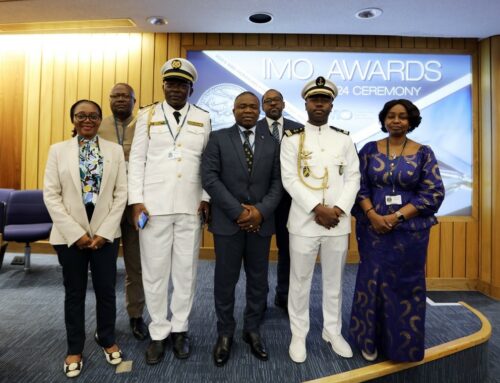Recommended Protocol by Road Guardians:
Motorcycle Accident Scene Management

The Road Guardians’ Accident Scene Management Program is a training course designed to teach motorcyclists how to effectively respond to and manage crash scenes involving motorcycles until emergency medical services arrive.
The program emphasizes the importance of taking immediate action to assess the situation, communicate with emergency services, and provide basic medical care to those involved in any motorcycle accident. Simple acronyms such as PACT, ABCSS, and SAMPLE are taught to help manage emergencies safely.
PACT stands for “Prevent, Assess, Contact, Treat”, and is one of the protocols taught in the Road Guardians’ Accident Scene Management Program to help the responder recall priorities.
P – Prevent further injury: The first step is to mitigate any immediate dangers by directing traffic and using appropriate signage/cones to divert traffic away from the crashscene, preventing further accidents and injuries. Be sure to position yourself safely, away from hazards.
A – Assess the Situation: Assess the scene for potential hazards, maintaining a clear view of the victims and any potential threats. Make sure to utilize appropriate personal protective equipment (PPE). Communicate with the victims and any bystanders at the scene, trying to provide clear and concise instructions to the victims, reassuring them, and obtaining any necessary information (e.g. medical history, allergies). Organize the accident scene to ensure that all individuals involved are accounted for and are safe, and that emergency services can access the scene quickly and easily.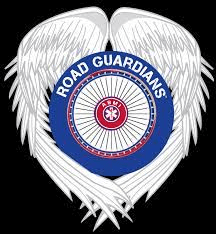
C – Contact EMS: The next step is to contact emergency services. This involves calling 911 or the appropriate emergency number, providing accurate and concise information about the accident, and requesting the necessary resources (e.g. ambulance, fire department, police). Select a designated person to call, and stay on the phone with the 911 dispatcher. If reception is poor, try to text 911. Do not delay!
T – Treat Injuries: The final step is to provide basic medical treatment to the victims until emergency services arrive. Treat the injured with Life-Sustaining Care (using the ABCSS of Trauma to prioritize). This may include checking and managing the victim’s airway, providing basic CPR, controlling bleeding, and stabilizing any suspected spinal injuries.
Injuries should be handled/prioritized in order of severity by utilizing the “ABCSS” of trauma:
A – Airway: Ensure that the airway is clear and unobstructed. Determine if the person is breathing. Lift the jaw to keep the neck straight, if you do not believe the person is breathing on their own. This is called “Jaw thrust.”
B – Breathing: Check for breathing and ensure that the aiway is not obstructed. If the person is not breathing on their own, keep the jaw lifted and, while using a breathing barrier, give two breaths initially, then one every 6 seconds.
C – Circulation: Check for signs of circulation, such as a pulse, and provide basic CPR if needed. In trauma, a loss of circulation comes from bleeding, so look for and treat obvious external bleeding using direct pressure or a tourniquet (arms and legs only) if necessary.
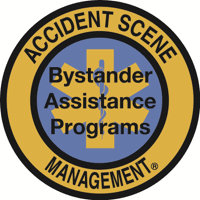
S – Shock: Manage shock by keeping the victim warm and lying down. Remember
the victim could be bleeding internally– so elevate legs, cover the person for warmth, and STAY CALM. Do not give them anything to drink, even if they ask.
S – Spinal Motion Restriction: The head and neck should be treated with extreme care in all motorcycle crashes. Less movement/motion is better, but if absolutely necessary, assist the person by telling then what you are doing, and support the head and neck carefully without coving ears or gripping tightly.
“SAMPLE” is an acronym used in accident scene management as a protocol for obtaining a medical history of the victim:
S – Signs and Symptoms: Assess the victim for any signs or symptoms of injury, such as bleeding, difficulty breathing, or loss of consciousness.
A – Allergies: Determine if the victim has any known allergies, especially to medication or medical equipment that may be used in their treatment.
M – Medications: Determine what medications the victim is currently taking, as well as any medical conditions they may have.
P – Past Medical History: Determine if the victim has a history of any medical conditions or surgeries that may affect their treatment.
L – Last Oral Intake: Determine when the victim last ate or drank, as this may affect their treatment and the use of certain medications.
E – Events Leading up to the Incident: Obtain information about how the crash occurred and any events leading up to it, as this may provide valuable information about the victim’s injuries and potential treatment.
Using the “SAMPLE” acronym can help you obtain a comprehensive medical history of the victim, which can help emergency services provide appropriate and effective treatment at the crash scene (and later).
Overall, in following these protocols, motorcyclists can effectively manage crash scenes and provide immediate assistance to those in need, potentially saving lives and minimizing the impact of the event.
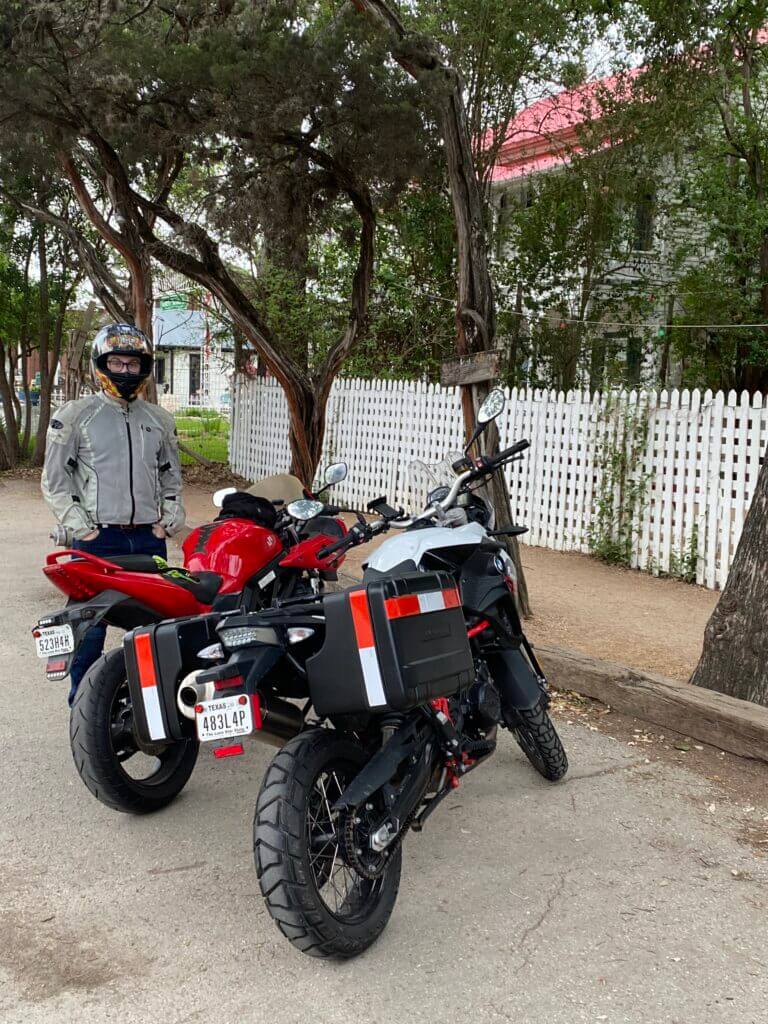
We at the Herd Law Firm, PLLC, are motorcycle riders, too! We support bikers and motorcyclists injured on the road, and have successfully represented such victims seeking the assistance and compensation they so need and deserve.
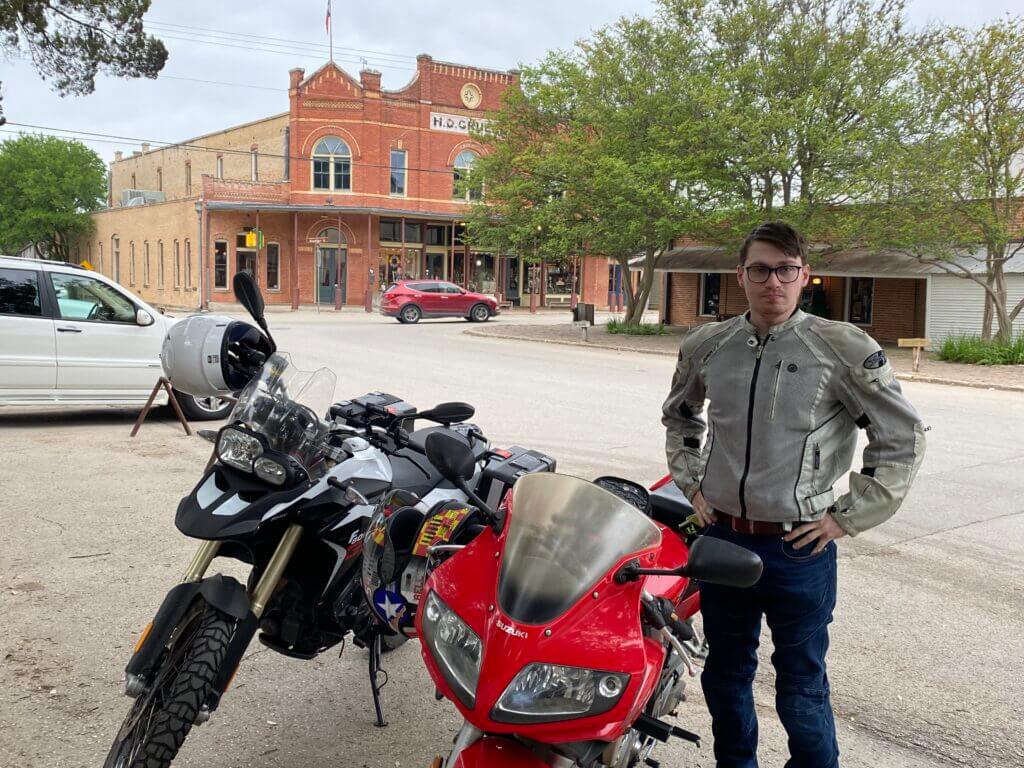
(Image: Road Guardians, Pixabay)






